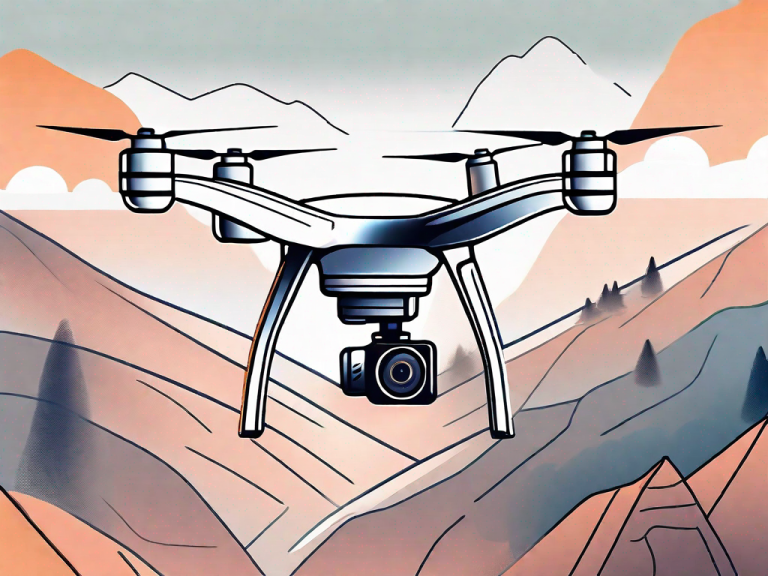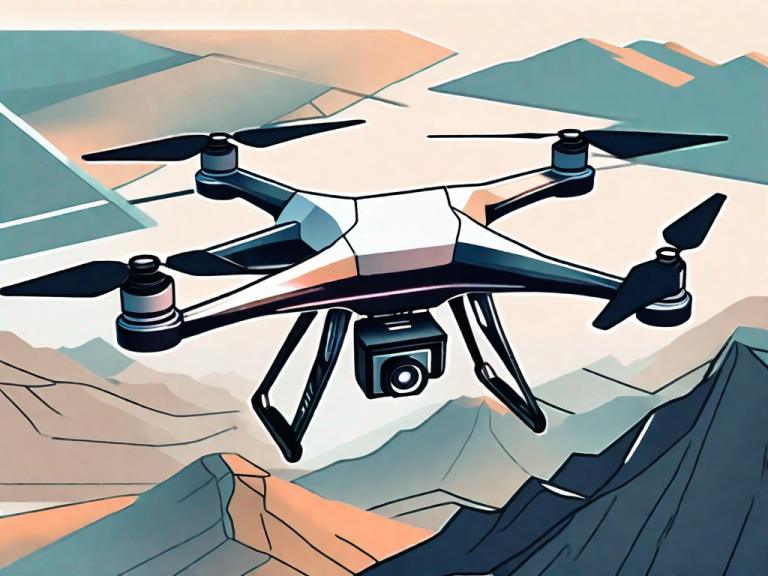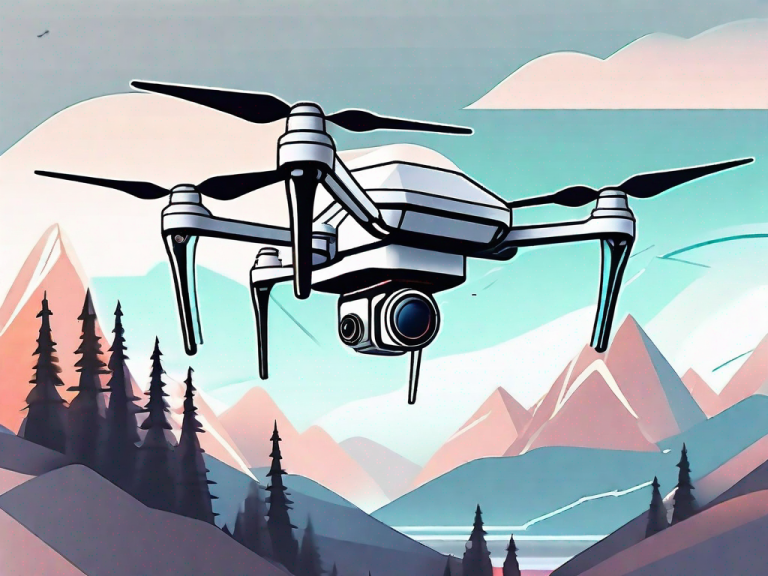Are you interested in building your own drone? Building a DIY drone kit can be a rewarding and educational experience for drone enthusiasts, whether you’re a beginner or an experienced pilot. In this comprehensive guide, we will take a deep dive into the essential components of a drone kit, the different choices you have when it comes to building your own drone, and provide step-by-step instructions on assembling and customizing your drone. We will also cover important safety precautions, regulations, and best practices for flying your drone safely. So let’s get started on this exciting drone-building journey!
Building Your Own Drone: A Comprehensive Guide
Building your own drone allows you to have full control over every aspect of its design and functionality. You can customize your drone to your specific needs and preferences, whether you are interested in aerial photography, videography, racing, or simply flying for fun. By assembling your own drone, you gain valuable knowledge about the inner workings of these amazing flying machines, which can help you troubleshoot and maintain your drone in the long run.
In this guide, we will explore each component of a drone kit, from the frame to the flight controller, motors, propellers, and camera options. We will also delve into the different flight modes, features, and add-ons you can incorporate into your DIY drone kit.
Additionally, this guide will provide step-by-step instructions on how to assemble your drone, including wiring and soldering techniques. We will cover safety precautions and best practices to ensure a successful and safe build. Furthermore, we will discuss the various software options available for programming and controlling your drone, as well as tips for optimizing its performance.
The Essential Components of a Drone Kit
When assembling your drone from scratch, it is crucial to have a good understanding of the essential components that make up a drone kit. These components include:
- The Frame: The frame is the backbone of your drone. It provides structural integrity and holds all the other components together. When choosing a frame, consider factors such as weight, material, and design.
- The Flight Controller: The flight controller is like the brain of your drone. It receives input from the pilot or autopilot system and sends signals to the motors and other components to control the drone’s flight. There are various types of flight controllers available, each with its own set of features and capabilities.
- The Motors: Motors are responsible for propelling the drone through the air. They generate thrust by spinning the propellers. Understanding the different types of motors and their specifications is essential for building a drone that suits your needs.
- The Propellers: Propellers play a crucial role in determining the flight characteristics of your drone. They create lift and control the drone’s stability and maneuverability. Choosing the right propellers based on size, pitch, and material is important for achieving the desired performance.
- The Battery: The battery provides power to all the electrical components of your drone. Selecting the right battery is essential for achieving optimum flight time and performance. Factors to consider include capacity, weight, and voltage.
- The Camera (Optional): If you are interested in aerial photography or videography, adding a camera to your drone kit is a must. There are various camera options available, including action cameras, DSLRs, and specialized drone cameras. Each has its own advantages and limitations.
By understanding the function and importance of these essential components, you will be better equipped to build a high-quality drone that meets your specific requirements. Now, let’s delve deeper into each component and explore the choices available.
Additionally, another important component of a drone kit is the Electronic Speed Controller (ESC). The ESC controls the speed and direction of the motors, allowing the drone to maneuver and change altitude. It receives signals from the flight controller and adjusts the power sent to each motor accordingly. Choosing the right ESC is crucial for ensuring smooth and responsive flight performance.
Choosing the Right Frame for Your DIY Drone
The frame is the foundation of your drone, and selecting the right frame is crucial for building a drone that suits your needs and preferences. There are various factors to consider when choosing a frame:
- Weight: The weight of the frame affects the overall weight of your drone, which directly impacts flight time, maneuverability, and stability. Opt for a frame that strikes a balance between strength and weight.
- Material: Drone frames are commonly made of materials like carbon fiber, aluminum, or plastic. Each material has its own advantages and considerations. Carbon fiber frames are lightweight and offer excellent strength, but they can be more expensive than other options.
- Design: Frames come in different designs, such as H-frame, X-frame, or Y-frame. Each design has its own advantages when it comes to stability, maneuverability, and payload capacity. Consider your intended use for the drone when choosing a design.
Once you have a clear understanding of your specific needs and the factors to consider when choosing a frame, you can make an informed decision that aligns with your objectives.
Another important factor to consider when choosing a frame for your DIY drone is the size. Frames come in various sizes, ranging from small frames suitable for micro drones to larger frames for professional-grade drones. The size of the frame will determine the overall dimensions and payload capacity of your drone. It’s important to choose a frame size that can accommodate the components and accessories you plan to use, while still maintaining the desired flight characteristics.
Understanding the Different Types of Motors for Your Drone Kit
The motors are the powerhouse of your drone, providing the necessary thrust to lift the drone off the ground and fly. There are various types of motors available, each with its own set of characteristics and specifications.
When selecting motors for your drone kit, consider the following factors:
- Size: The size of the motor directly impacts the performance and payload capacity of your drone. Smaller motors are generally used for lightweight drones or racing drones, while larger motors are suitable for heavy-lift applications.
- KV Rating: The KV rating determines the rotational speed of the motor. Higher KV motors generate more speed, while lower KV motors provide more torque. The choice depends on the type of flying you want to do with your drone.
- Battery Compatibility: Ensure that the motors you choose are compatible with the battery voltage you intend to use. Using mismatched motors and batteries may lead to performance issues or even damage your components.
By understanding these motor specifications and considering your specific requirements, you can select the right motors that provide the necessary thrust and performance for your DIY drone.
Another important factor to consider when selecting motors for your drone kit is the motor efficiency. Motor efficiency refers to how effectively the motor converts electrical energy into mechanical energy. A more efficient motor will provide better flight performance and longer flight times.
Motor efficiency is typically measured as a percentage, with higher percentages indicating greater efficiency. When comparing motors, look for ones with higher efficiency ratings to maximize the performance and endurance of your drone.
Selecting the Best Flight Controller for Your DIY Drone
The flight controller is the brain of your drone, responsible for processing sensor data and converting it into commands for the motors and other components. Choosing the right flight controller is essential for achieving stable flight and accessing advanced features.
When selecting a flight controller for your DIY drone, consider the following:
- Processor Power: The processor power determines the flight controller’s ability to process data quickly and efficiently. Higher processor power allows for more advanced flight modes and features.
- Connectivity: Flight controllers offer various connectivity options, such as USB, Bluetooth, or Wi-Fi. Consider your preferred method of communication and select a flight controller that aligns with your requirements.
- Features: Flight controllers come with different features, such as GPS, barometer, accelerometer, and gyroscope. Advanced features like GPS provide position hold and return-to-home capabilities.
- Compatibility: Ensure that the flight controller you choose is compatible with your choice of firmware and any other components you plan to integrate, such as cameras or GPS modules.
By considering these factors and researching the available options, you can select a flight controller that meets your specific requirements, enabling you to enjoy stable flight and access advanced functionalities.
Price: Another important factor to consider when selecting a flight controller is the price. Flight controllers can vary significantly in price, depending on their features and capabilities. It’s important to set a budget and find a flight controller that offers the right balance between price and performance for your DIY drone project.
Exploring the Different Propeller Options for Your Drone Kit
Propellers play a crucial role in determining the flight characteristics of your drone. The right propellers can improve efficiency, stability, and maneuverability. It is essential to understand the different propeller options to achieve the desired performance.
When selecting propellers, consider the following:
- Size: Propellers come in various sizes, typically measured by their length and pitch. The size affects factors such as thrust, speed, and maneuverability. Ensure the propellers you choose are compatible with the motor specifications.
- Material: Propellers are commonly made of materials like plastic, carbon fiber, or composite materials. Each material has its own advantages and considerations. Plastic propellers are inexpensive and lightweight, while carbon fiber propellers offer improved strength and performance.
- Pitch: The pitch of a propeller refers to the distance the propeller travels in one complete rotation. Higher pitch propellers provide more thrust but may sacrifice efficiency, while lower pitch propellers offer better efficiency but sacrifice thrust.
- Blade Count: Propellers come in different blade counts, such as two, three, four, or more. Each blade count has its own impact on performance, noise, and efficiency. Consider your specific needs and the desired flight characteristics when choosing a blade count.
By understanding these propeller specifications and considering your specific requirements, you can select the right propellers that optimize your drone’s performance for your intended use.
Another important factor to consider when selecting propellers is the weight of your drone. Heavier drones may require larger propellers with higher thrust capabilities to lift off and maintain stability. Lighter drones, on the other hand, may benefit from smaller propellers that offer better maneuverability.
In addition to size, material, pitch, and blade count, it is also worth considering the shape of the propellers. Propellers can have different blade shapes, such as flat, curved, or swept-back. Each shape has its own aerodynamic characteristics, affecting factors like lift, drag, and noise. Experimenting with different blade shapes can help you fine-tune your drone’s performance to suit your specific needs.
Understanding Battery Options for Maximum Flight Time
The battery is a key component that powers your drone. Selecting the right battery is crucial for maximizing flight time and optimizing performance. There are various battery options available, each with its own set of considerations.
When selecting a battery for your drone, consider the following:
- Capacity: Battery capacity is measured in milliampere-hours (mAh) and represents the amount of charge the battery can store. Higher capacity batteries provide longer flight times but may add weight to your drone.
- Voltage: Battery voltage affects the speed and power output of your drone. Ensure that the battery voltage is compatible with the motor and other components in your drone kit. Using an incorrect voltage may result in performance issues or damage to your components.
- Chemistry: Drone batteries are commonly available in different chemistry types, such as lithium polymer (LiPo) or nickel-metal hydride (NiMH). LiPo batteries are favored for their high energy density, lighter weight, and ability to provide high discharge rates.
- Weight: The weight of the battery directly affects your drone’s flight time and maneuverability. Strike a balance between capacity and weight to achieve your desired flight characteristics.
By considering these battery specifications and your specific needs, you can select the right battery that provides maximum flight time and optimal performance for your drone.
How to Choose the Right Camera for Aerial Photography and Videography
If you are interested in capturing stunning aerial photos or videos with your drone, adding a camera to your DIY drone kit is essential. There are various camera options available, each suited for different purposes and budgets.
When choosing a camera for aerial photography and videography, consider the following:
- Resolution: The resolution of the camera determines the level of detail in your photos or videos. Higher resolution cameras allow for larger prints or more detailed footage.
- Sensor Size: Camera sensors come in various sizes, such as full-frame, APS-C, or Micro Four Thirds. Sensor size impacts low-light performance, dynamic range, and depth of field.
- Stabilization: Consider whether the camera has built-in stabilization or if it requires external stabilizers like gimbals. Stabilization is crucial for capturing smooth and steady footage.
- Field of View: Different cameras have different field of view options, such as wide-angle or zoom capabilities. Consider your intended use and the desired perspective when selecting a camera.
By understanding these camera specifications and your specific requirements for aerial photography and videography, you can choose a camera that captures stunning, high-quality imagery from above.
Tips for Assembling Your DIY Drone Kit: Step-by-Step Instructions
Now that you have selected all the necessary components for your DIY drone kit, it’s time to put them together. Assembling your drone can be an exciting and rewarding process. Follow these step-by-step instructions to ensure a successful build:
- Prepare your workspace: Clear a clean and well-lit area to assemble your drone. Ensure you have all the tools and components within reach.
- Assemble the frame: Follow the manufacturer’s instructions to assemble the frame. Secure the arms, landing gear, and other frame components.
- Install the flight controller: Mount the flight controller securely onto the frame. Connect the necessary cables to the flight controller according to the manufacturer’s instructions.
- Attach the motors and propellers: Attach the motors to the designated mounting points on the frame. Secure them tightly. Install the propellers onto the motors, ensuring they are tightened properly but not overly tightened.
- Connect the ESCs: Connect the Electronic Speed Controllers (ESCs) to the motors and the flight controller. Follow the wiring diagram provided by the manufacturer for proper connections.
- Install the battery: Securely mount the battery onto the frame, ensuring it is well-balanced. Connect the battery to the flight controller, ESCs, and other necessary components.
- Make final connections: Connect any additional components, such as the camera, GPS module, or telemetry systems, according to the manufacturer’s instructions.
- Check and double-check: Before powering on your drone, double-check all the connections, wires, and components to ensure everything is secure and in the correct position.
- Power on and calibrate: Power on your drone and follow the manufacturer’s instructions to calibrate the flight controller and other systems. This ensures accurate flight performance and stability.
- Perform a test flight: With caution and in a safe open space, perform a test flight to ensure your drone is flying correctly. Gradually increase its altitude and test the different flight modes and features.
By following these step-by-step instructions, you can assemble your DIY drone kit confidently, knowing that you have taken all the necessary precautions for a successful build.
Troubleshooting Common Issues When Building Your Own Drone
Building a DIY drone can sometimes come with challenges and troubleshooting needs. Here are some common issues you may encounter and possible solutions:
- Motor spin direction: If the motor spins in the wrong direction, you can swap any two wires connected to the motor to reverse its rotation.
- Frequency interference: If you experience signal interference or range issues, avoid flying in areas with Wi-Fi signals, power lines, or other sources of electromagnetic interference.
- Flight stability: If your drone is unstable during flight, check the center of gravity and ensure it is properly balanced. Adjust the trim settings on the flight controller if necessary.
- Battery life: If you are not getting the desired flight time, recheck the battery capacity and consider using a higher-capacity battery or adjusting your flying style to reduce power consumption.
- Binding issues: If your radio transmitter fails to bind with the receiver, ensure that both are configured correctly and operating on the same frequency.









